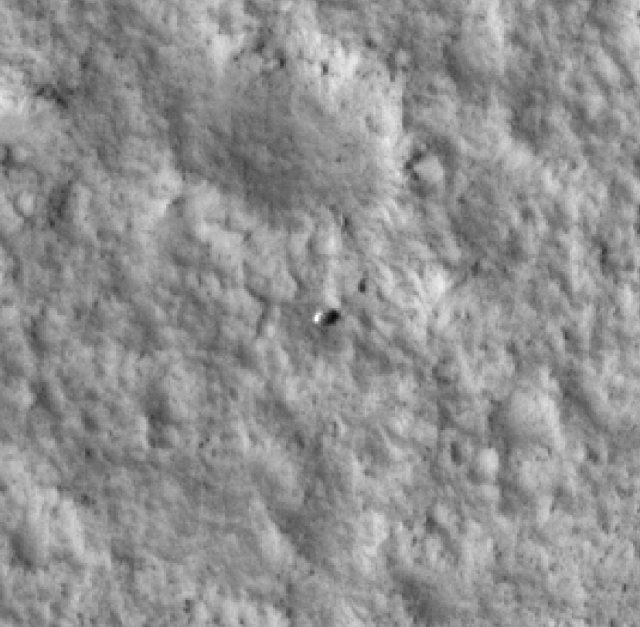
Where else can you find another world like Earth? Venus is similar in size and mass to our planet, but its broiling hot surface temperature and sulfuric acid rain put some hard limits on comparisons; other interesting worlds lack atmospheres or are frozen over. But Mars has potential. Despite the thin carbon dioxide atmosphere and low surface gravity (if you weigh 150 pounds on Earth, you'd only weigh 56 pounds on Mars), the planet is just enough like Earth to offer the promise of habitability—whether in the future by humans, or in the past or present by native life forms.
So it's no surprise that Mars was an exploration target from the very beginning of spaceflight. The first missions sent to Mars by the Soviet Union began in 1960, a scant three years after Sputnik. The first successful flyby came in 1965 with NASA's Mariner 4, and the first successful landing was the Soviet Mars 3 in 1971. That lander ceased transmission soon after touchdown, which is common on the Red Planet—Wikipedia's timeline of Mars exploration is a sobering read for that very reason.
The many failures make the successful landings look even more amazing. With the Mars Science Laboratory (MSL) rover, known as Curiosity, arriving on-planet August 6, we're going to take a look back at the landers and rovers that brought us to today.
Update: Curiosity has landed successfully.
May the good Lord take a Viking to you
(Heading stolen shamelessly from The Muppet Show.)

NASA's Viking 1 landed on Mars on July 20, 1976, while its twin Viking 2 arrived a few months later on September 3. Both landers were the same, consisting of a sturdy aluminum frame with three legs to hold them above the Martian surface.
Mars' average atmospheric pressure is only 0.6 percent of Earth's, meaning atmospheric friction isn't always reliable to slow them for entry. Engineers needed to be creative when dropping probes on the planet. The heavy Viking landers (each weighed 1,260 pounds on Earth) were equipped with parachutes and downward-pointing rockets to slow their descent. To complicate matters, the Viking team (which included planetary scientist Carl Sagan) wanted to avoid chemical contamination of Mars. Eventually, they sent the retro-rocket thrust through 18 nozzles, spreading out the exhaust.
Viking's scientific mission was ambitious: totally characterizing Mars' chemical, geological, meteorological, and (hopefully) biological properties. To this end, each lander was equipped with a digging robotic arm, two cylindrical panoramic cameras, a complete weather station, and a mass spectrometer for identifying the chemical components of the atmosphere and soil. Viking was a remarkably well-designed experiment, one of the triumphs of robotic exploration.
Though science fiction authors' conceptions of civilization having thrived on Mars didn't pan out, scientists still debate whether Viking's biological sensors were actually capable of finding microbial life or not.
The Viking 1 lander ceased operations more than six years after touchdown, after a mistake by one of the controllers on Earth led to the communications antenna being closed. The Viking 2 lander's battery failed after three years of operations. Since then, the lander has received a fictional visit from a small boy and his tiger, and the Viking landers were both identified from orbit by the HiRise camera on the Mars Reconnaissance Orbiter.

The first rover
Fifteen years passed between the end of the Viking program and the next successful landing: the Mars Pathfinder mission, which included a stationary lander that deployed the first autonomous robotic rover. Named Sojourner for civil rights leader Sojourner Truth, this rover was the proof-of-concept mission that helped with the later design of the Spirit, Opportunity, and Curiosity rovers.
Pathfinder used the same landing method that would be used for Spirit and Opportunity. Instead of touching down with rockets, the lander was enclosed in inflatable airbags. After entry and a parachute-slowed descent, the airbags cushioned impact and the lander actually bounced across the surface before coming to rest. The cushions then were deflated to allow the rover to exit. (Personally, I would have paid a lot of money to have seen the event, but of course no exterior camera recorded it).
Pathfinder bounced to a stop on July 4, 1997 in the Ares Vallis, a boulder-strewn floodplain in Mars' northern hemisphere. The location was selected to be fairly flat and because the large number of rocks would hopefully aid in Sojourner's navigation.
Sojourner was much smaller than the other probes, only 10.5 kg in mass. This small size allowed it to climb rocks easily, thanks to a low center of gravity and six independently articulated wheels. In fact, according to one of the project leaders, Dan Britt of the University of Central Florida, Sojourner was a little too good at climbing rocks since it had the bad habit of getting stuck. The rover also turned out to be afraid of its own shadow. Since it had to operate autonomously in rocky terrain, Sojourner had an obstacle-avoidance algorithm which triggered when the robot's shadow was in the path it was instructed to take. (Britt presented to a Laboratory for Atmospheric and Space Physics workshop I attended at the University of Colorado on July 20-22, 2012. Much of the detail about the Pathfinder mission comes from his talk).

The rocks in the landing region were named for cartoon characters (Scooby Doo, Ren, Stimpy, etc.), since the names needed to be memorable, non-derogatory, and not based on real people. Pathfinder also made some significant discoveries about Martian weather, including clouds that form at sunset and the relative frequency of dust devils—surface material whipped into vortexes. Sojourner experienced about two dust devils every day, showing how volatile Martian weather can be.
Sojourner endured for three months, well past the slated end to its one-month mission. This experience foreshadowed the success of Spirit and Opportunity.
reader comments
125